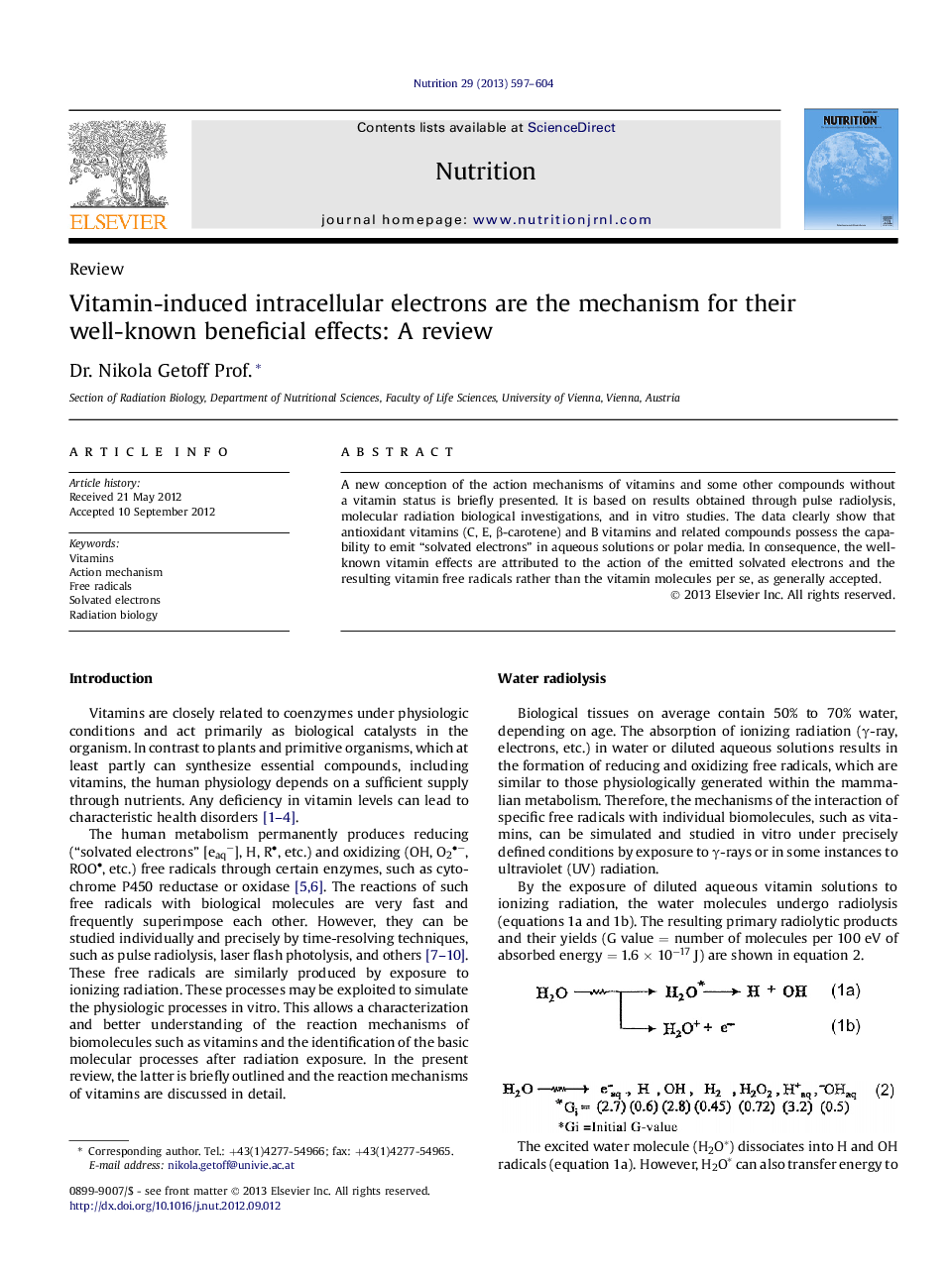| Article ID | Journal | Published Year | Pages | File Type |
|---|---|---|---|---|
| 6089860 | Nutrition | 2013 | 8 Pages |
Abstract
A new conception of the action mechanisms of vitamins and some other compounds without a vitamin status is briefly presented. It is based on results obtained through pulse radiolysis, molecular radiation biological investigations, and in vitro studies. The data clearly show that antioxidant vitamins (C, E, β-carotene) and B vitamins and related compounds possess the capability to emit “solvated electrons” in aqueous solutions or polar media. In consequence, the well-known vitamin effects are attributed to the action of the emitted solvated electrons and the resulting vitamin free radicals rather than the vitamin molecules per se, as generally accepted.
Related Topics
Health Sciences
Medicine and Dentistry
Endocrinology, Diabetes and Metabolism
Authors
Dr. Prof.,
